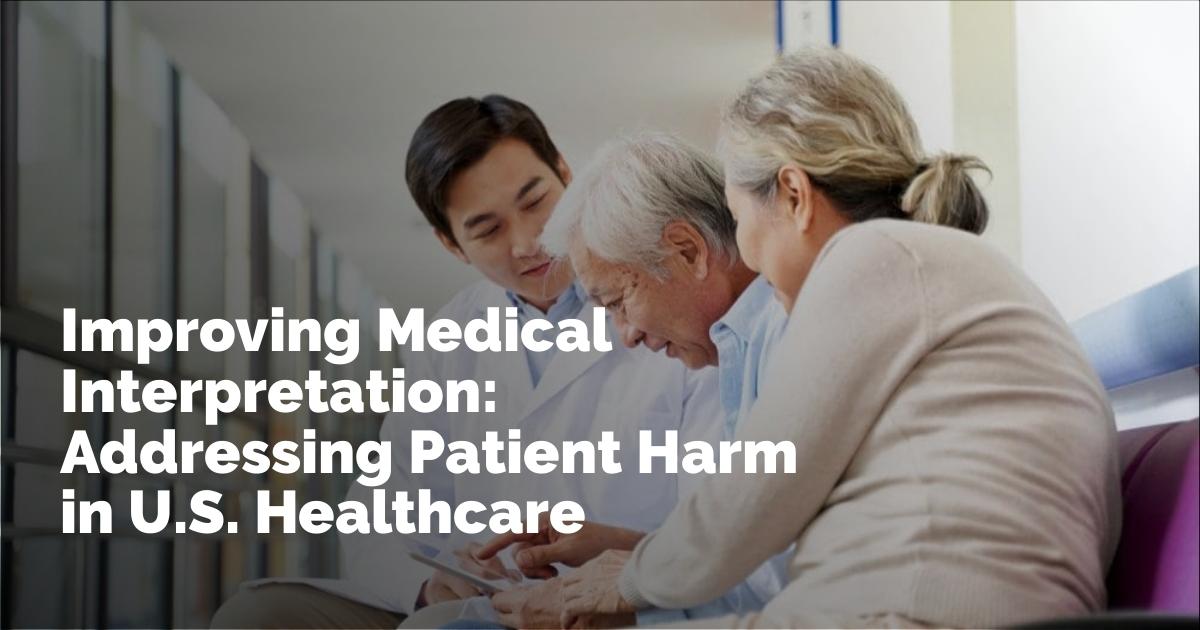Medical Interpretation Challenges in the U.S.: A Growing Concern
Medical interpretation serves as the vital bridge between healthcare providers and patients with Limited English Proficiency (LEP). However, the current state of medical interpretation in the U.S. reveals significant inadequacies, often leading to detrimental health outcomes for patients. This article delves into the challenges of medical interpretation, explores the reliance on machine translation, and provides insights into potential improvements for healthcare systems.
The Shortage of Qualified In-Person Interpreters
A critical challenge facing the U.S. healthcare system is the shortage of skilled in-person medical interpreters. This gap forces hospitals to rely heavily on technological solutions like machine translation tools. While these tools provide a quick fix, their effectiveness varies significantly across languages. Research indicates that while tools like Google Translate perform better for languages like Spanish, they falter when it comes to Chinese, particularly Cantonese—a language spoken by over 70 million people worldwide, including a significant 43.6% of LEP individuals in San Francisco alone. The disparity in machine translation accuracy can pose clinically significant and even life-threatening risks, highlighting the inadequacy of current resources.
The Limitations of Machine Translation Tools
The dependency on machine translation tools for medical interpretation presents numerous challenges. These tools often fail to account for the intricacies and nuances of medical terminology, resulting in inaccurate communication that can hinder effective diagnosis and treatment. The exclusion of languages such as Cantonese from platforms like Google Translate further exacerbates the issue, limiting the scope of accurate translation services available to patients. This language barrier often leads to a lack of inclusivity and prevents LEP patients from effectively communicating their symptoms, which can result in higher readmission rates post-discharge due to miscommunication rather than medical errors.
Cultural Sensitivity and Communication Barriers
Cultural sensitivity plays a crucial role in patient-provider communication. A lack of awareness and accommodation for cultural differences can create significant barriers to building trust and rapport with patients. For instance, studies have shown that specific culturally nuanced preferences among patient populations, such as Hmong individuals in the Minneapolis-St. Paul area, tend to favor family members over professional interpreters. Meanwhile, Latinx patients often express a preference for professional interpreters to maintain confidentiality, avoiding discomfort that may arise from discussing sensitive topics with family present.
Community Health Needs and Interpreter Services
Hospitals attempt to address health inequities through Community Health Needs Assessments (CHNAs), evaluating both patient demographics and local population data to determine social determinants of health. Despite these efforts, the strategies outlined in CHNAs are frequently vague and lack the necessary precision and actionable steps needed to drive meaningful change. Simple calls for "increased access to interpreter services" fall short without a comprehensive plan to address the underlying barriers, including technical challenges associated with interpretation technology.
Leveraging Demographic Data for Enhanced Interpreter Services
Healthcare facilities can harness demographic data to tailor interpreter services that align with patient needs. For instance, institutions like Tufts Medical Center, serving Boston's Chinatown, can benefit from investing in resources that cater specifically to Cantonese and Mandarin speakers. Rather than relying solely on machine translation, fostering collaboration between professional interpreters and family members can enhance communication and patient outcomes.
Beyond Language: Emphasizing Cultural Competence
Even with a robust team of interpreters, hospitals must also prioritize cultural competence alongside linguistic proficiency. Effective communication transcends mere language concordance; it involves a deep understanding of cultural values and practices that influence patient expectations and decision-making. Hospitals can improve cultural competence through investments in specialized diversity training, informed by focus group feedback and grounded in concrete actions aimed at addressing inequality.
Integrating these insights into mandatory employee orientations—where diversity training is already a component—could ensure that healthcare professionals are equipped to utilize interpreter services effectively and provide culturally competent care.
Embracing a Multilingual and Multicultural Approach
Healthcare systems must evolve beyond expecting patients to conform to Western health communication models. Acknowledging linguistic and cultural diversity will allow hospitals to deliver more equitable and patient-centered care. By developing tailored translation services and fostering cultural awareness, healthcare providers can significantly enhance the quality of care for their diverse patient populations, ultimately reducing barriers to communication and improving health outcomes for LEP individuals.
출처 : Original Source

